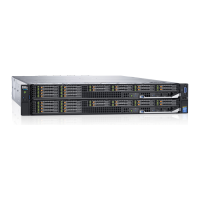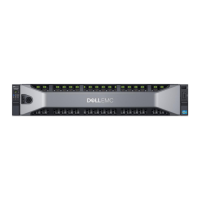Dynamic Host Configuration Protocol (DHCP) | 163
3. Lease Management: DHCP servers use leases to allocate addresses to clients for a limited time. The
DHCP server maintains information about each of the leases, including lease length.
4. Responding To client requests: DHCP servers respond to different types of requests from clients,
primarily, granting, renewing, and terminating leases.
5. Providing administration services: DHCP servers include functionality that allows an administrator
to implement policies that govern how the DHCP performs its other tasks.
Configuration Tasks
To configure DHCP, an administrator must first set up a DHCP server and provide it with configuration
parameters and policy information including IP address ranges, lease length specifications, and
configuration data that DHCP hosts need.
Configuring the Dell Force10 system to be a DHCP server is a three-step process:
1. Configure the Server for Automatic Address Allocation
2. Specify a Default Gateway
3. Enable DHCP Server
Related Configuration Tasks
• Configure a Method of Hostname Resolution
• Create Manual Binding Entries
• Debug DHCP Server
• DHCP Clear Commands
Configure the Server for Automatic Address Allocation
Automatic address allocation is an address assignment method by which the DHCP server leases an IP
address to a client from a pool of available addresses.
Create an IP Address Pool
An address pool is a range of IP addresses that may be assigned by the DHCP server. Address pools are
indexed by subnet number.
To create an address pool, follow these steps:
Step Task Command Syntax Command Mode
1 Access the DHCP server CLI context.
ip dhcp server
CONFIGURATION
2 Create an address pool and give it a name.
pool name
DHCP

